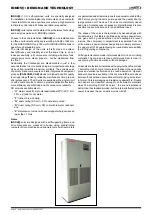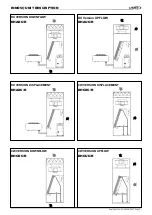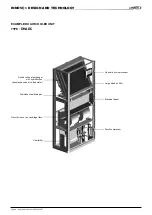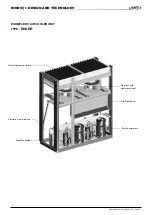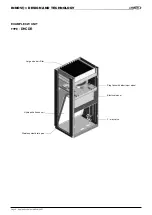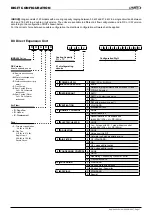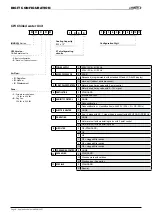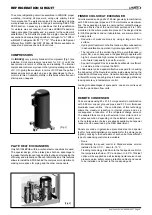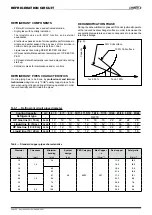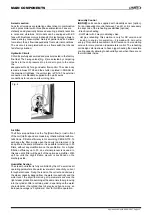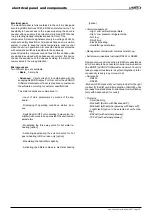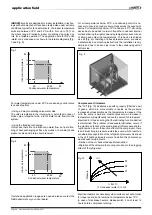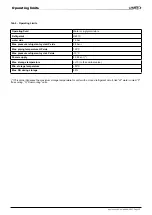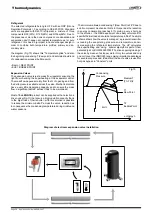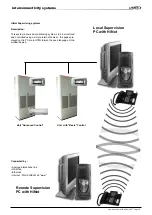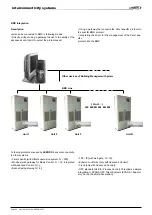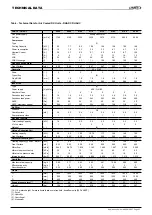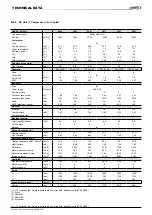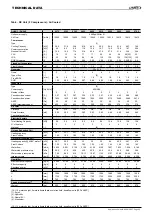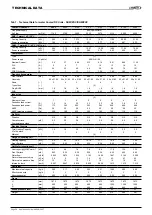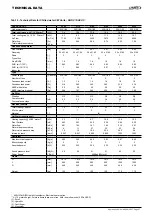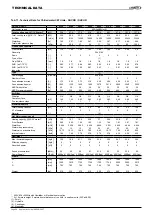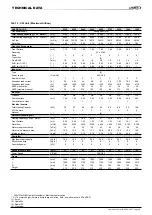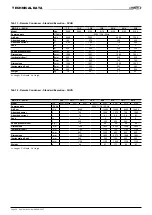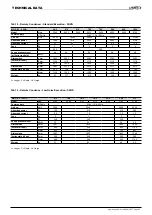
R407C
Fig.10
Page - Application Guide INNOV@-0907
Condensing
Pressure
Medium T
(T1+T2)/2
T1
Dew Point
T2
Bubble Point
P
enthalpy h
Refrigerant
The selected refrigerants belong to HFC with an ODP (Ozone
Depletion Potential) = 0 according to CEE 2037/00. Standard
units are supplied with R407C refrigerant, a mixture of three
components R32 (23%), R125(25%) and R134a(52%). Due to
the presence of more than one component, condensation and
evaporation don't happen at constant temperature as for pure
refrigerant : this has a big impact in heat exchanger design in
order to combine both temperature profiles, primary and se
-
condary side.
the diagram (Fig.10) shows this "Temperature glide" and also
the beginning condensing T (dew point) and saturated liquid/end
of condensation process (bubble point).
• Begin = DEW POINT
• End = BUBBLE POINT
Expansion Valves
The expansion valve is just a mass flow regulator ensuring the
right flow checking the superheating at the evaporator outlet.
The mass flow depends mainly from the % of opening and from
the delta pressure available across the valve. Mechanical valves
have a very little modulating capacity an dto ensure the mass
flow, a significant delta P across it has to be maintained.
Most of the
LENNOX
product can be supplied with an electronic
driven valve (Fig.11) that ensure a big modulation capacity thank
to the big stroke of their shutter : with this solution is possible
to reduce the minimum delta P across the valve, reduction as
in consequence the condensing temperature during middle and
winter seasons.
Thermodynamics
The minimum allowed condensing T (Dew Point) is 28°C due to
scroll compressor mechanical limits. In this periods the reduction
in energy consumption reaches 51% giving a very short pay
to the solution : the R&D department can easily calculate it for
specific thermal load and outside temperature profiles.The simple
schema shows how the valve is managed : a pressure transmitter
is reading the evaporating pressure and temperature sensor
is measuring the refrigerant temperature. The mP calculates
the superheating and, using special algorythms part of them
patented (pat. nr. BO2002A000785ITA), drives opening/closing of
the valve by means of a stepper motor. Only two valves and only
one coil cover the INNOV@ range giving important advantages
for eventual spares and, in addition, the same valve is used for
hot gas bypass in "Constant" units.
Diagram of electronic expansion valve installation
Содержание INNOVA DHADC Series
Страница 1: ...Providing indoor climate comfort INNOV Application guide INNOV AGU 0907 E ...
Страница 2: ......
Страница 55: ......

